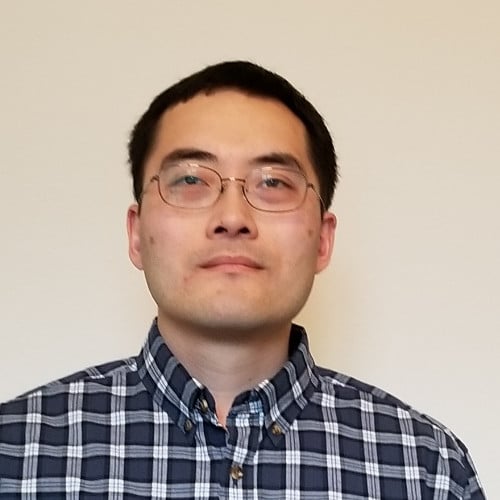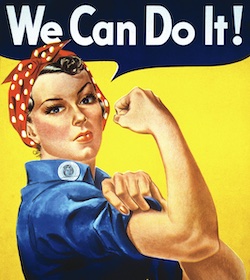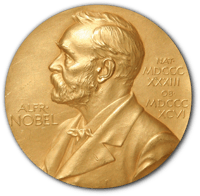 Just a few short weeks after the highly irreverent yet still important Ig Nobel Ceremony, the science community recognized the cream of its crop with the 2023 Nobel Prizes in the first full week of October. The dates for the official announcements are aligned with their usual order throughout the years, always announcing Physiology and Medicine first, then Physics, then Chemistry. The Nobel Committee will transition toward the Literature and Peace prizes to round out the week before Economics is announced on the following Monday. As usual, these prizes recognize a lifetime of work that has given the greatest benefit to humanity. Click the links to check out some of our picks for greatest Nobel science achievements as well a look at last year's Nobel winners, but here we go for this year's running tally of scientific legend.
Just a few short weeks after the highly irreverent yet still important Ig Nobel Ceremony, the science community recognized the cream of its crop with the 2023 Nobel Prizes in the first full week of October. The dates for the official announcements are aligned with their usual order throughout the years, always announcing Physiology and Medicine first, then Physics, then Chemistry. The Nobel Committee will transition toward the Literature and Peace prizes to round out the week before Economics is announced on the following Monday. As usual, these prizes recognize a lifetime of work that has given the greatest benefit to humanity. Click the links to check out some of our picks for greatest Nobel science achievements as well a look at last year's Nobel winners, but here we go for this year's running tally of scientific legend.
A Rapid Vaccine Roll Out
The world shut down with the rise and height of the COVID-19 pandemic, as the novel SARS-CoV-2 illness spread across the globe in rapid fashion and overwhelmed our collective health care systems, and as of August of 2023, has hospitalized over 6 million Americans while we have sadly witnessed over 1 million deaths. Nearly as soon as it was identified, laboratories and pharmaceutical companies in every region started working towards the mechanisms behind the disease and what we thought might be a long process to develop a suitable vaccine to stem its spread. Although humanity had success in the past with creating life-saving vaccines to many different illnesses, those were usually years-long processes.
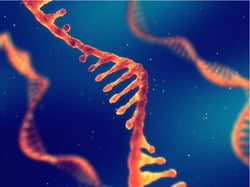 Enter this year's Nobel Prize in Physiology or Medicine winners, who spearheaded the research into effective mRNA-based vaccines that formed the basis for the rapid roll out of the COVID-19 vaccines that most of us have taken to save our lives and the lives of those around us! The two winners, Doctors Katalin Karikó and Drew Weissman of the University of Pennsylvania, had been working on this new idea to use mRNA as a therapeutic since the late 1990s. Their decades-long work into the mechanisms of immune response to mRNA and the modification of these molecules to make them safer to deliver into hosts to offer immune protection against diseases without the need to introduce the actual pathogen itself.
Enter this year's Nobel Prize in Physiology or Medicine winners, who spearheaded the research into effective mRNA-based vaccines that formed the basis for the rapid roll out of the COVID-19 vaccines that most of us have taken to save our lives and the lives of those around us! The two winners, Doctors Katalin Karikó and Drew Weissman of the University of Pennsylvania, had been working on this new idea to use mRNA as a therapeutic since the late 1990s. Their decades-long work into the mechanisms of immune response to mRNA and the modification of these molecules to make them safer to deliver into hosts to offer immune protection against diseases without the need to introduce the actual pathogen itself.
You can read the incredible journey of discovery by Doctors Karikó and Weissman here at NobelPrize.org, and how their key findings decades ago led to the development of vaccines against difficult viruses such as Zika and MERS-CoV. With those years of experience under their belt, companies such as Pfizer and Moderna were able to adapt the technology to roll out effective mRNA-based vaccines against SARS-CoV-2 just over a year after its first characterization in 2019, my son and I getting the Pfizer shots and its subsequent boosters while my wife got Moderna in early 2021. It turns out that having the body's cells produce the antigen for you is a pretty big time saver, not to mention a huge life saver for billions across the globe!
Studying Electrons With the Quickness
The limitations of human perception make it so that very fast events look like they're happening in an instant, but we know that even a beam of light needs some time to get from one side of a room to another. Most everything that contributes to the generation of power and chemical reactions involves electrons, and changes in electrons occur at the attosecond scale, or within 10-18 of a second. While much of modern science has been able to piece together processes and transition states, to truly measure and visualize the less-than-minute changes within atoms or molecules, special equipment and technology is needed to, in essence, slow time down so we can see it.
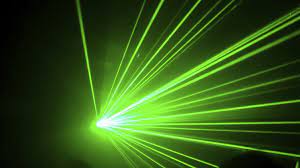 This year's Nobel laureates in Physics have been recognized for their experiments with extremely short pulses of light in order to measure these ultra-rapid electron movements. Anne L'Huillier of Lund University in Sweden, Pierre Agostini of the Ohio State University, and Ferenc Krausz of the Max Planck Institute were equally awards the Nobel Prize for their groundbreaking work in attosecond-scale light pulsing that could allow the imaging of electron movement and energy changes. To me, this is similar to when a fluorescence microscope shines laser light to excite a fluor and emits a signal, only many magnitudes faster. Per the press release:
This year's Nobel laureates in Physics have been recognized for their experiments with extremely short pulses of light in order to measure these ultra-rapid electron movements. Anne L'Huillier of Lund University in Sweden, Pierre Agostini of the Ohio State University, and Ferenc Krausz of the Max Planck Institute were equally awards the Nobel Prize for their groundbreaking work in attosecond-scale light pulsing that could allow the imaging of electron movement and energy changes. To me, this is similar to when a fluorescence microscope shines laser light to excite a fluor and emits a signal, only many magnitudes faster. Per the press release:
“We can now open the door to the world of electrons. Attosecond physics gives us the opportunity to understand mechanisms that are governed by electrons. The next step will be utilising them,” says Eva Olsson, Chair of the Nobel Committee for Physics.
Congratulations to these pioneers for bringing the previously imperceptible into the known, from which humanity might be able to gain new insights into the subatomic world and develop new applications in medical diagnostics and technology!
Size and Matter
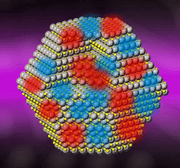 I first learned the term "quantum dot" when we were working on miniaturizing the Western blot in my PhD lab, when they were discussed as an alternative to the commonly used secondary antibodies tethered to standard fluorophores. At that point, the technology had been theorized since the 1980s and started being actively developed a decade later and were gaining steam. The idea behind quantum dots is that they are so small that their optical and electronic properties are now governed by quantum mechanics, and thus have new and interesting applications in nanotechnology that could be translated to many fields, including computing, illumination, biological sensors, and more.
I first learned the term "quantum dot" when we were working on miniaturizing the Western blot in my PhD lab, when they were discussed as an alternative to the commonly used secondary antibodies tethered to standard fluorophores. At that point, the technology had been theorized since the 1980s and started being actively developed a decade later and were gaining steam. The idea behind quantum dots is that they are so small that their optical and electronic properties are now governed by quantum mechanics, and thus have new and interesting applications in nanotechnology that could be translated to many fields, including computing, illumination, biological sensors, and more.
This year's Nobel Prize in Chemistry was awarded to three scientists who pioneered the study and construction of quantum dots. The first demonstrated size-dependent quantum effects were performed by Alexei Ekimov in the 1980s, while Louis Brus of Columbia University proved these effects were size-related shortly after. In 1993, Moungi Bawendi of MIT implemented a chemical production process for quantum dots of a quality that could be used in multiple applications. Today, their hard work is seen in the illumination systems of computer monitors, certain LED lights, and can be used in biological imaging as well. The potential of quantum dots continues to expand as researchers continue to build on this revolutionary technology!
Enriching Humanity
While ABclonal is a bioscience company, humanity would not flourish without the efforts of these Nobel laureates whose contributions are just a bit outside of the science realm. In the literature category, Norwegian author Jon Fosse was awarded for his innovative plays and other works that touch on many aspects of human life. Fosse has a prolific catalog of plays, novels, and even children's books, and has a style that many have described as "enigmatic" as well as "minimalist," although I confess I've probably never read anything by a Nobel-winning author outside of John Steinbeck. An interesting fun fact is that Fosse is the first Norwegian Nobel literature laureate in a century and uniquely writes in Nynorsk, the lesser-used language of his native country.
You may have heard of the decades-long turmoil in Iran as the citizens have been fighting for greater freedoms, including for women. This year's Nobel Peace Prize winner is Narges Mohammadi, an Iranian woman who has fought against the oppression of women in her native country for decades and as of the announcement of the award, was still in prison. The expression of courage in the face of tyranny and overt danger is admirable, and along with the large subset of humans who advocate for equality and freedom, I hope this award will raise awareness and help safeguard her until a better day comes for the people of Iran.
Finally, but certainly not to be overlooked, the Nobel Prize for Economic Sciences was awarded to Claudia Goldin, currently of Harvard University but who received her PhD in economics from the University of Chicago. As you may have seen from our blogs and in your own workplaces, women are underrepresented in the labor force and there is a very obvious and disturbing gender wage gap as well. Goldin tracked the upward trajectory of women in the workforce as societal norms changed and women received more access to education and reproductive freedom. Per the Committee Chair, Jakob Svensson, "Understanding women's role in the labour [market] is important for society. Thanks to Claudia Goldin's groundbreaking research, we now know much more about the underlying factors and which barriers may need to be addressed in the future."
Listen to Hannah and I review the scientific awards season here at BioChat!
Congratulations to the Nobel science award winners! Truly, they have all contributed a great benefit to humanity.

